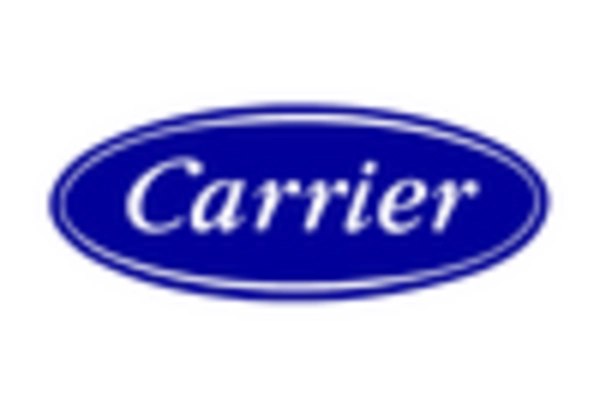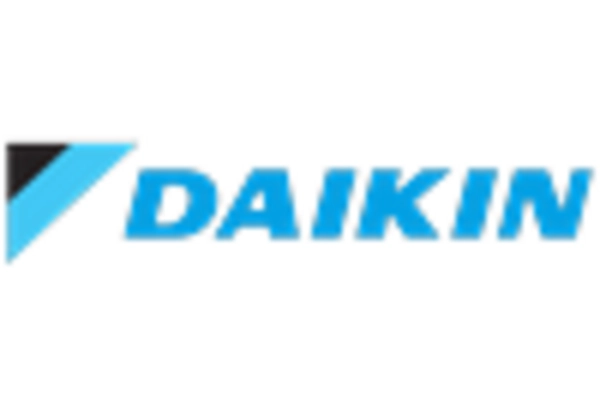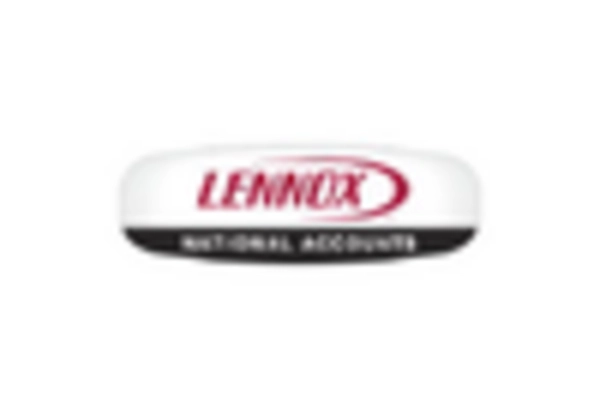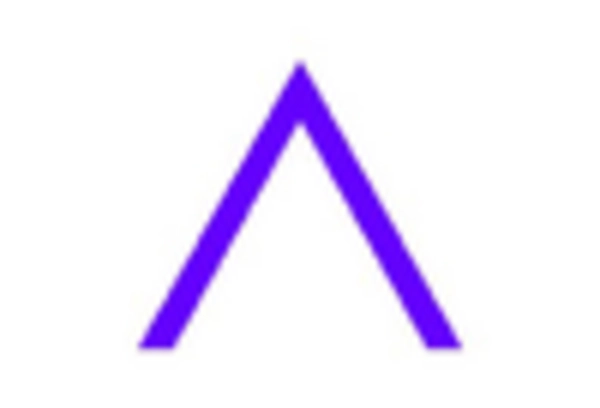Regulatory Compliance and Standards
The air handling-units market in Europe is increasingly influenced by stringent regulatory frameworks aimed at enhancing energy efficiency and reducing carbon emissions. The European Union has established various directives, such as the Energy Performance of Buildings Directive (EPBD), which mandates the use of energy-efficient systems in new constructions and renovations. Compliance with these regulations often necessitates the adoption of advanced air handling units that meet specific performance criteria. As a result, manufacturers are compelled to innovate and upgrade their product offerings to align with these standards. This regulatory landscape not only drives demand for high-efficiency units but also fosters competition among manufacturers to develop cutting-edge solutions that comply with evolving regulations. Consequently, the air handling-units market in Europe is likely to experience growth as stakeholders prioritize compliance and sustainability in their operations.
Rising Demand for Indoor Air Quality
The growing awareness of indoor air quality (IAQ) among European consumers is significantly impacting the air handling-units market. With increasing concerns about health and well-being, there is a heightened demand for systems that can effectively filter and circulate clean air within buildings. Studies indicate that poor indoor air quality can lead to various health issues, prompting both residential and commercial sectors to invest in advanced air handling solutions. The market is witnessing a shift towards units equipped with high-efficiency particulate air (HEPA) filters and ultraviolet (UV) light technology to enhance air purification. This trend is further supported by the European Commission's initiatives to promote healthier living environments. As a result, the air handling-units market is expected to expand as consumers prioritize IAQ, leading to increased sales of advanced filtration systems and technologies.
Technological Advancements in HVAC Systems
Technological innovation plays a pivotal role in shaping the air handling-units market in Europe. The integration of advanced technologies, such as variable refrigerant flow (VRF) systems and energy recovery ventilators (ERVs), is revolutionizing the HVAC landscape. These innovations not only enhance energy efficiency but also improve the overall performance of air handling units. The market is witnessing a surge in demand for smart air handling systems that can be remotely monitored and controlled, allowing for optimized energy usage and maintenance. According to industry estimates, the adoption of smart technologies in HVAC systems could lead to energy savings of up to 30%. As manufacturers continue to invest in research and development, the air handling-units market is likely to benefit from the introduction of more sophisticated and efficient solutions that cater to the evolving needs of consumers.
Urbanization and Infrastructure Development
The rapid urbanization across Europe is driving significant growth in the air handling-units market. As cities expand and populations increase, there is a pressing need for modern infrastructure that can accommodate the rising demand for residential and commercial spaces. This urban development often necessitates the installation of advanced HVAC systems, including air handling units, to ensure optimal climate control and air quality. According to recent data, urban areas in Europe are projected to grow by approximately 10% by 2030, leading to increased construction activities. Consequently, the air handling-units market is poised for growth as builders and developers seek efficient solutions to meet the demands of urban living. This trend underscores the importance of integrating advanced air handling technologies in new construction projects to enhance energy efficiency and occupant comfort.
Sustainability Initiatives and Green Building Practices
Sustainability initiatives are becoming increasingly prominent in the European construction sector, significantly influencing the air handling-units market. The emphasis on green building practices, driven by both regulatory requirements and consumer preferences, is prompting the adoption of energy-efficient air handling solutions. Many new construction projects are now designed to meet sustainability certifications, such as BREEAM and LEED, which often require the integration of high-performance HVAC systems. This shift towards sustainable building practices is likely to drive demand for air handling units that utilize eco-friendly refrigerants and energy recovery technologies. As a result, manufacturers are focusing on developing products that not only comply with sustainability standards but also offer long-term operational cost savings. The air handling-units market is expected to thrive as stakeholders increasingly prioritize environmental responsibility in their building projects.


















Leave a Comment